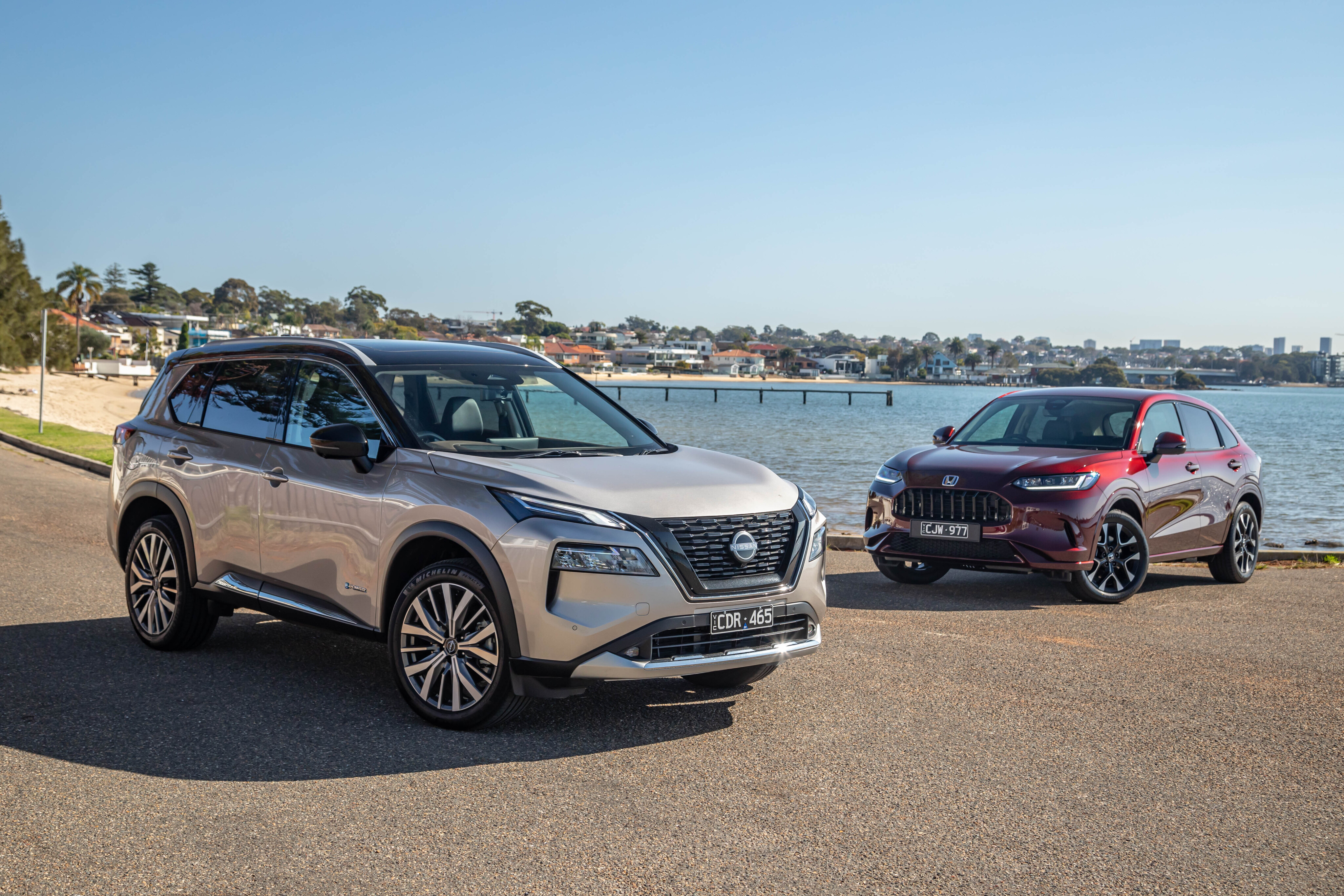
2023 Nissan X-Trail E-Power Ti-L
Things we like
- Spaaaaaaacccceee
- Interesting hybrid solution
- Great cruiser
Not so much...
- Flaky wireless Apple CarPlay
- No spare tyre
- Not hugely more efficient
2023 Honda ZR-V e:HEV LX
Things we like
- Looks good
- Better driving dynamics
- Efficient drivetrain
Not so much...
- Road noise
- Feels heavier than the petrol
One of the things I hear a lot, is that all cars are the same now.
But, actually, I could reach back into the Wheels catalogue to find letters and columns claiming the same thing for decades. These days, everything is an SUV (which is sort of true) and they’re all the same, people say.
Well, I’m here to tell you, they're not all the same.
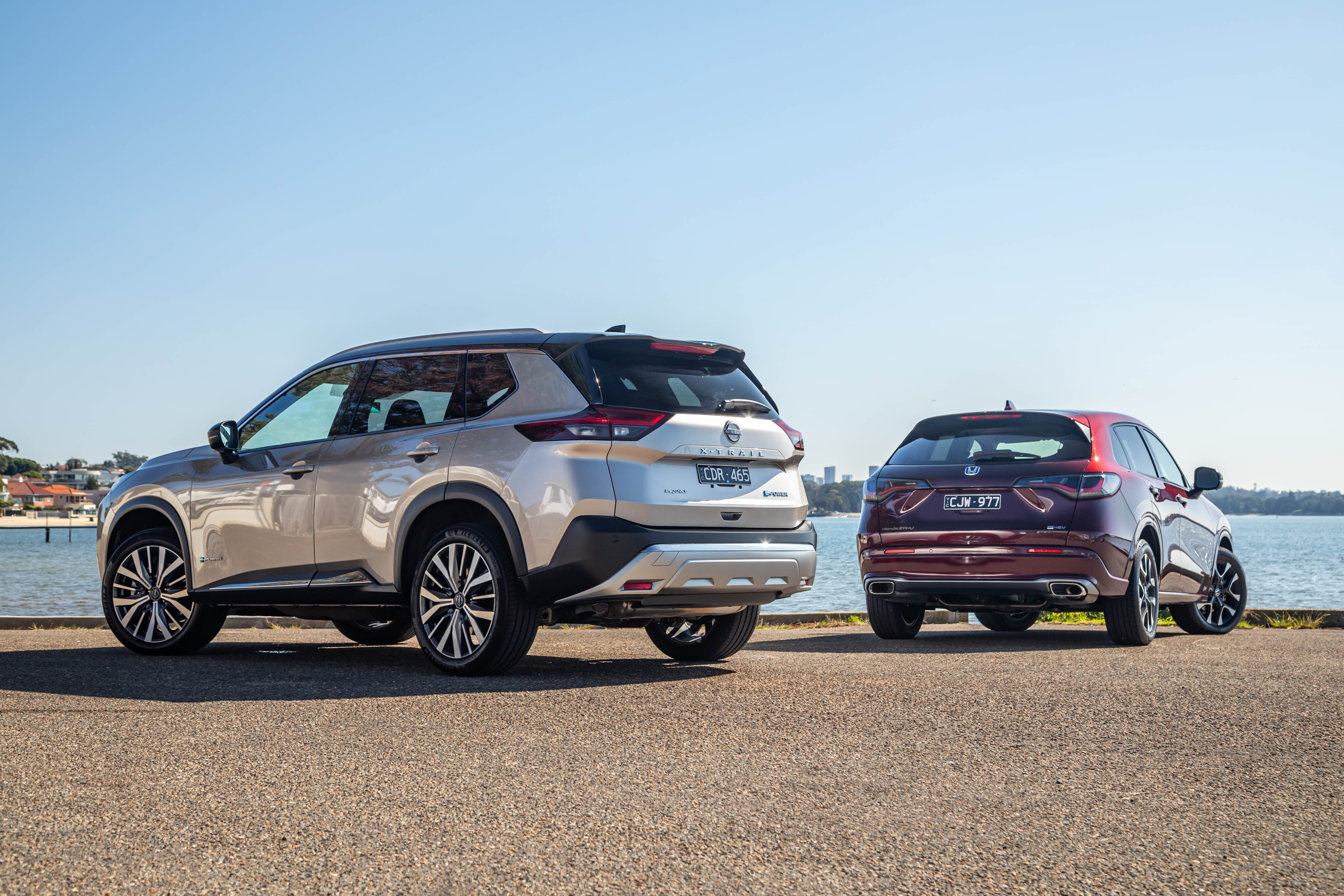
Here we have two cars – the Honda ZR-V and the Nissan X-Trail – both 2023 arrivals, both SUVs, but very, very different to each other. You can look at them both as hybrids taking on the Toyota RAV4, but they manage to form a pincer movement rather than a united front.
We’ve put these two together because despite being very different sizes and shapes, they’re also close in price. And when you add electrification, they land on the same shopping lists because of that.
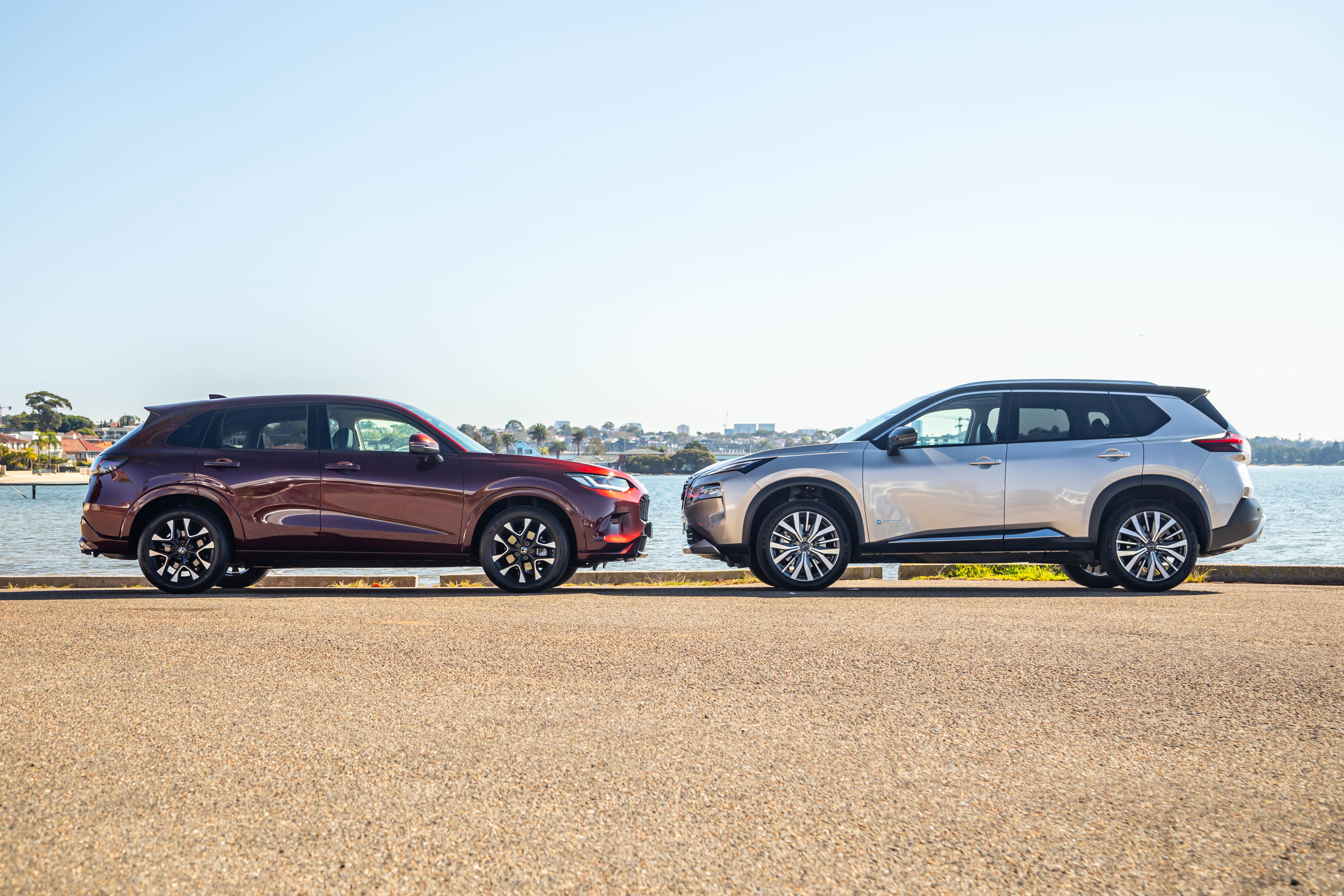
JUMP AHEAD
- How much are they, and what do you get?
- How do rivals compare on value?
- Interior comfort, space and storage
- What are they like to drive?
- How are they on fuel?
- How safe are they?
- Warranty and running costs
- VERDICT
- Specifications
How much are they, and what do you get?
The ZR-V and X-Trail look close-ish on paper, but the Honda’s no-haggle drive-away price works out a fair bit cheaper than the X-Trail’s eventual on-the-road price of about $62,000 depending on where you live.
You can save a few bucks on the X-Trail Ti which brings price and spec closer to the Honda’s and, let’s be honest, you’re not losing much if you.
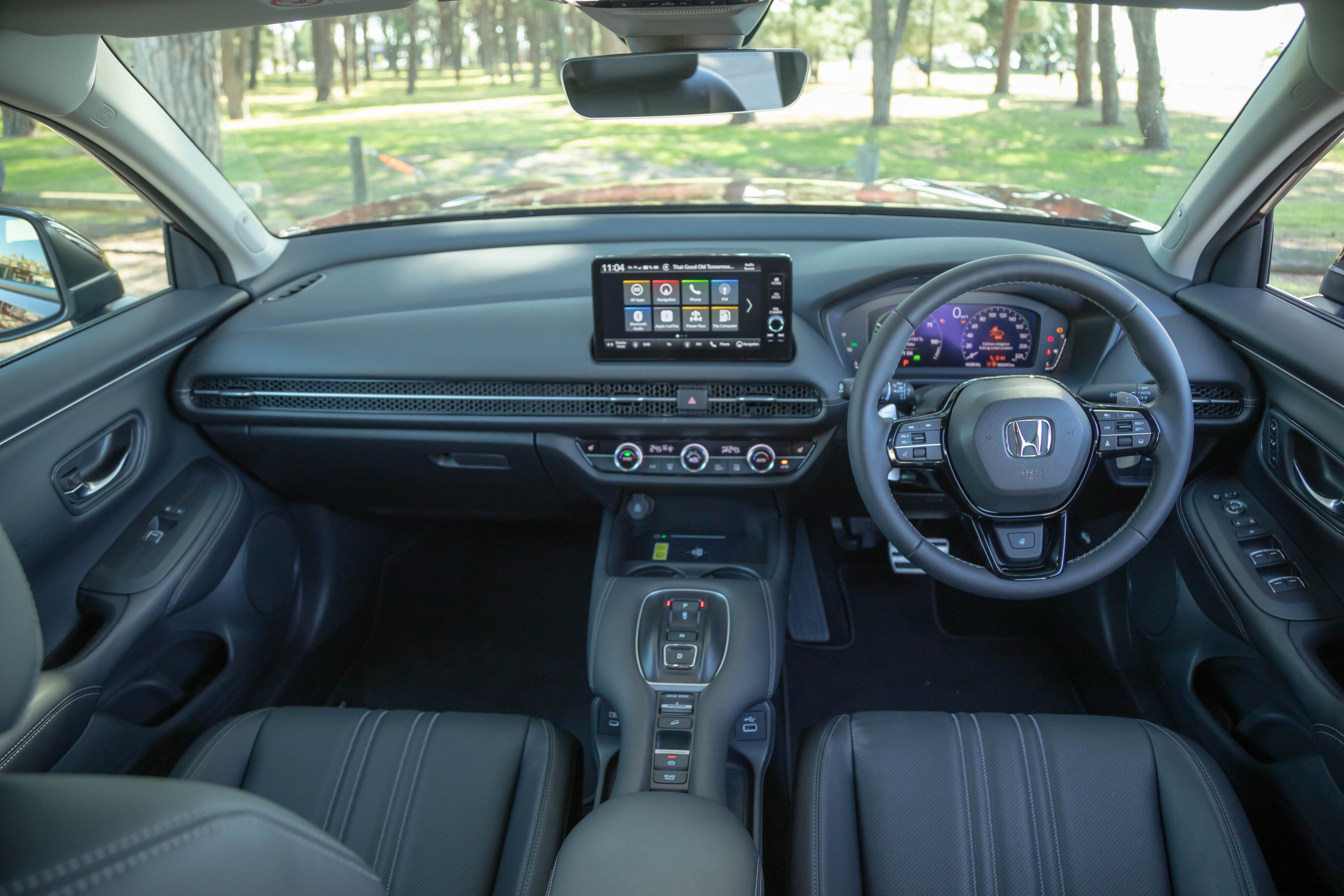
| Honda ZR-V e:HEV LX | Nissan X-Trail E-Power Ti-L | |
|---|---|---|
| Wheels | 18-inch alloy | 19-inch alloy |
| Stereo | 12 speakers, Bose branded | 10 speakers, Bose branded |
| Satellite navigation | Y | Y |
| Wireless phone charger | Y | Y |
| Headlights | Auto adaptive LED | Auto matrix LED |
| Sunroof | N | Y |
| 360-degree camera system | Y | Y |
| Heated steering wheel | Y | Y |
| Upholstery | Leather | Leather |
| Tailgate | Powered | Powered |
| Digital dashboard | Y | Y |
| Parking sensors | Front and rear | Front and rear |
| Touchscreen | 9.0-inch | 12.5-inch |
| Mobile integration | Wireless Apple CarPlay, Wired Android Auto | Wireless Apple CarPlay, Wired Android Auto |
| Auto wipers | Y | Y |
| Reversing camera | Y | Y |
| Head-up display | Y | Y |
| Active noise cancelling | N | Y |
| Climate control | Two zone | Three zone |
Neither of these cars has a particularly good media system, although the Nissan’s is preferable purely for its slightly better software and bigger screen. Both experienced niggles with the wireless Apple CarPlay (I can’t speak for Android Auto) but few systems manage that feature perfectly.
The X-Trail Ti-L’s higher price is offset by the sunroof (only of value if you want one), a few extra bits and pieces like Matrix LEDs, Nappa leather, three-zone climate control and heated rear seats. None of this stuff is earth-shattering.
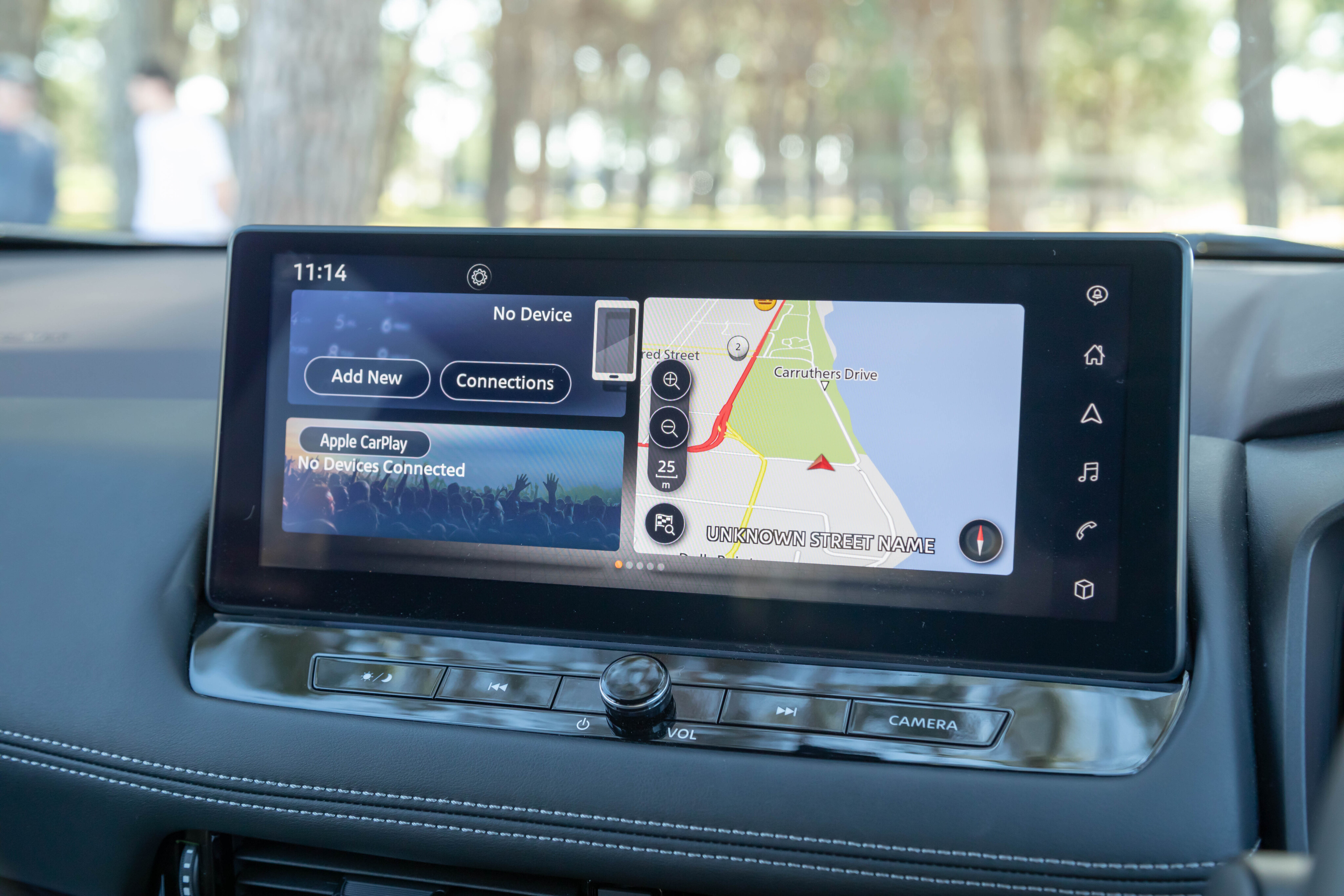
How do rivals compare on value?
The Toyota RAV4 dominates this segment and you can have a RAV4 Edge Hybrid for more than the X-Trail Ti-L (around $63,000 drive-away) sometime in 2025.
I’m only half-joking as I do expect RAV4 supply to improve as the economy touches down/crash lands (over to you Reserve Bank), but it doesn’t look like amazing value compared to either of these.
You also could look at the MG HS PHEV. It’s a reasonable performer with a fairly dowdy chassis and less convincing interior, it’s a tenner under fifty grand and has a proper electric-only range courtesy of its plug-in architecture and much bigger battery.
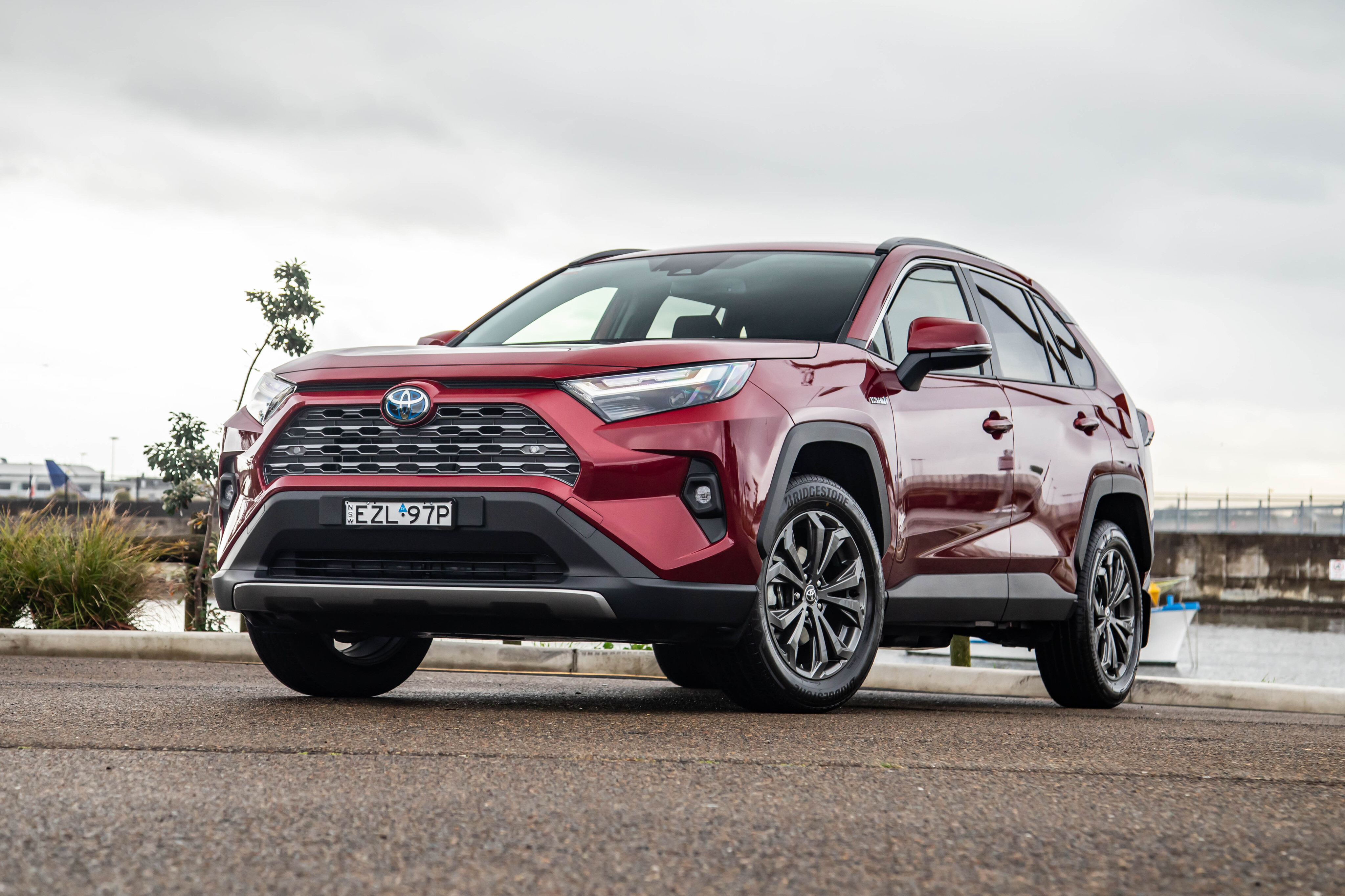
Interior comfort, space and storage
It will come as no surprise that the Nissan takes a clear win for interior space and storage.
A couple of areas where I expected the Honda to take a bit of a beating were closer than I thought. The first was rear seat space. While the Nissan is a little wider and the seats overall more comfortable, the Honda’s legroom was surprisingly closer to the Nissan than I had expected.
The X-Trail’s seat does roll forward and back but the ZR-V offers competitive lazing room for even tall folks like our resident totem pole John Law. Both cars also feature an armrest with cup holders.
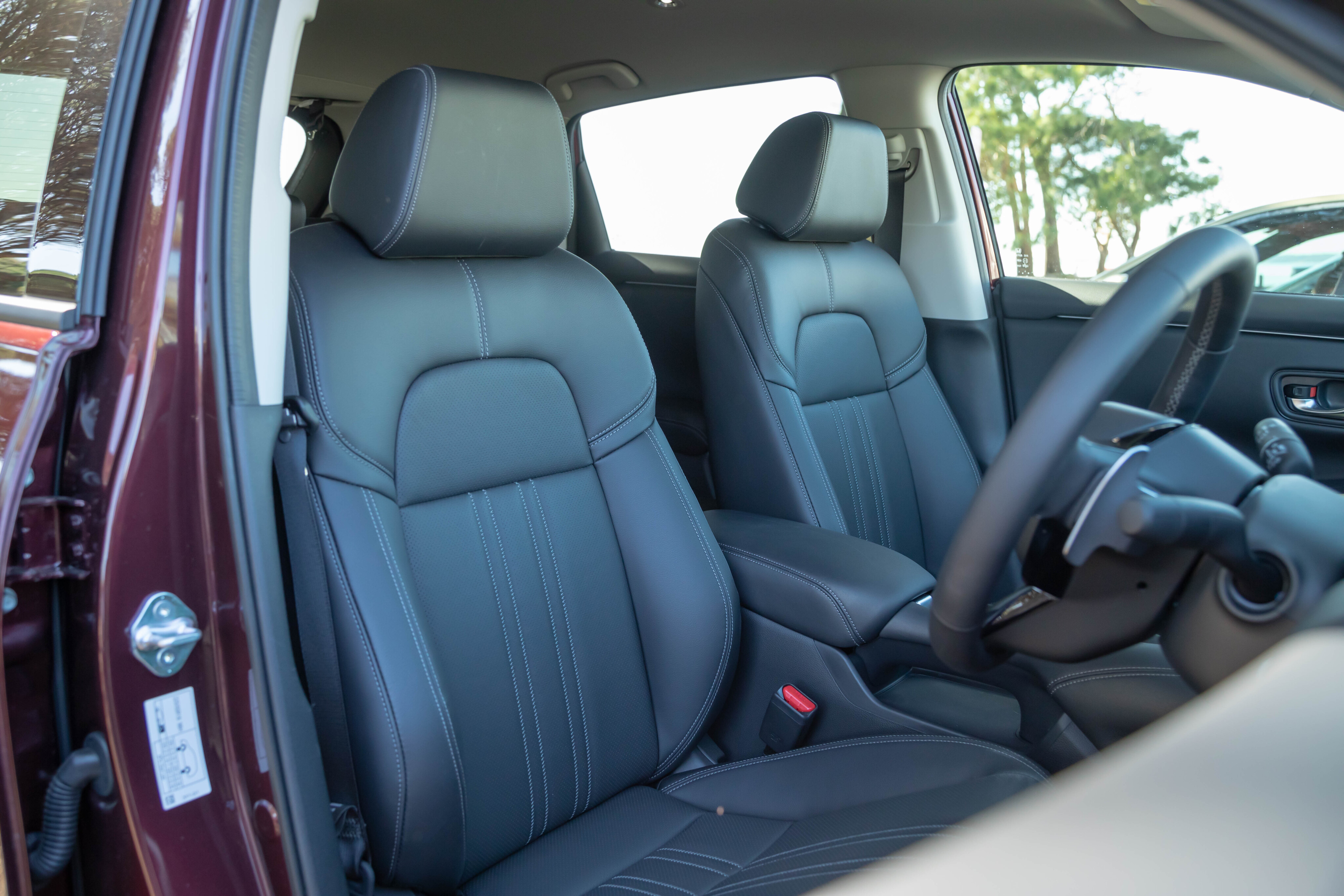
Nissan may claim better rear seat honours, but as I say, not by as far as its extra heft in all directions would suggest. It will be more comfortable for a long journey and the amount of light pouring into the cabin from the big windows means it’s rather pleasant in there.
Getting in is also easy, especially for parents loading kids. The doors open very wide indeed, Nissan saying they go to 85 degrees, which is near as dammit to perpendicular to the car. Loading bulky capsules or wrangling struggling kids into the back seat has never been so easy.
Cargo space is where the Nissan takes the lead – the Honda’s 380 litres is useful but hardly amazing in this category, with even the perennial tiddly-booted CX-5 offering an extra 60-odd litres. It’s a good boot, though, with a flat floor and no snags or silliness along the edges.
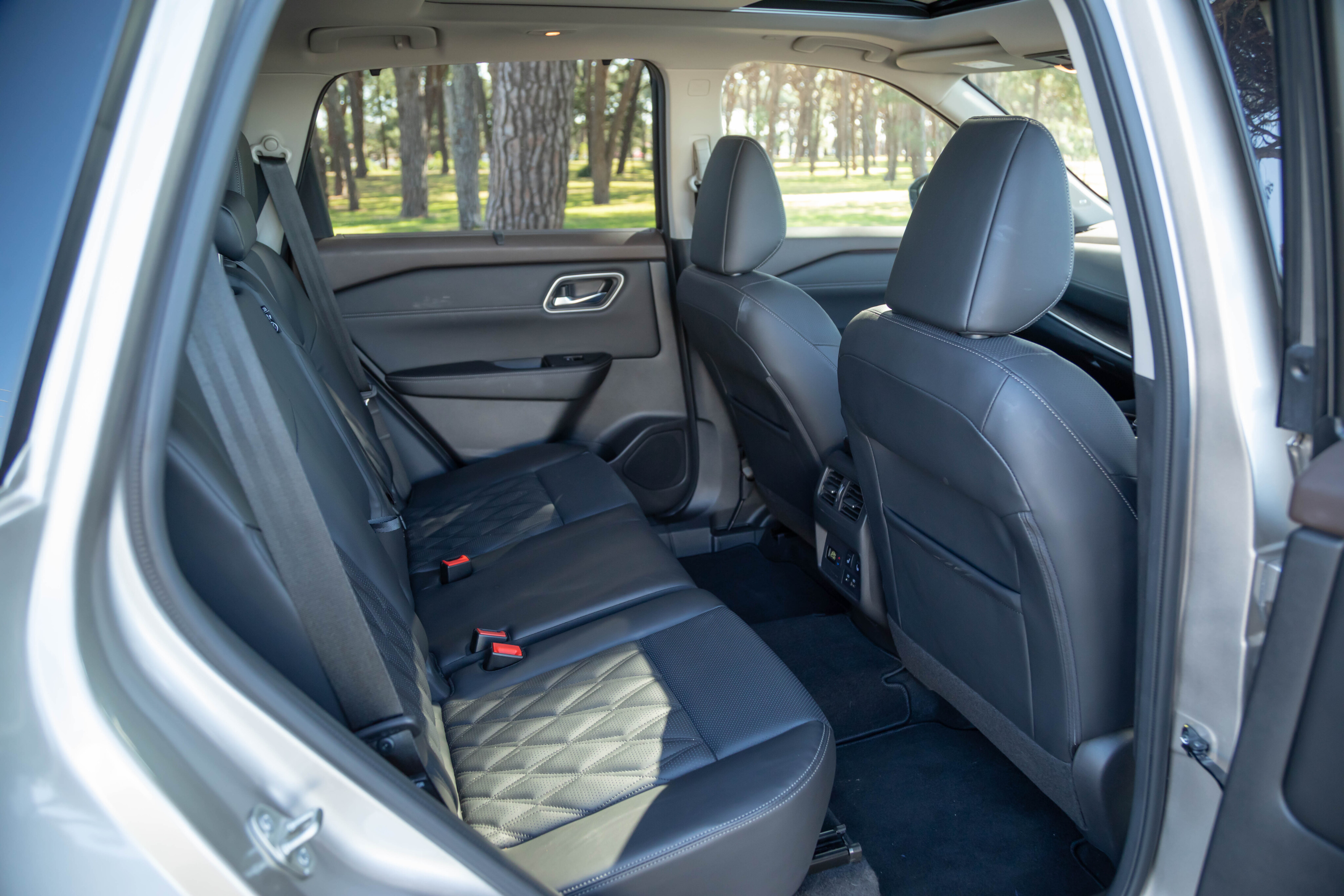
Although the X-Trail’s boot is a hefty 575 litres, there are two things you need to know.
It’s ten litres smaller than the petrol-only car and while that’s fine, it’s only because there isn’t a spare tyre.
The front seats are where things get interesting. In the Nissan, you’ve got two big screens, a head-up display and a majestic view out. The Honda’s two smaller screens (but with a head-up display) feature in a much sleeker dash design.
Both also have an under-console storage bin, but the Nissan’s is enough for a small backpack or handbag while the Honda’s will only take small items like phones and keys. Each has a pair of cup holders but the Honda’s is a much tighter feeling layout while the X-Trail’s is more generously proportioned.
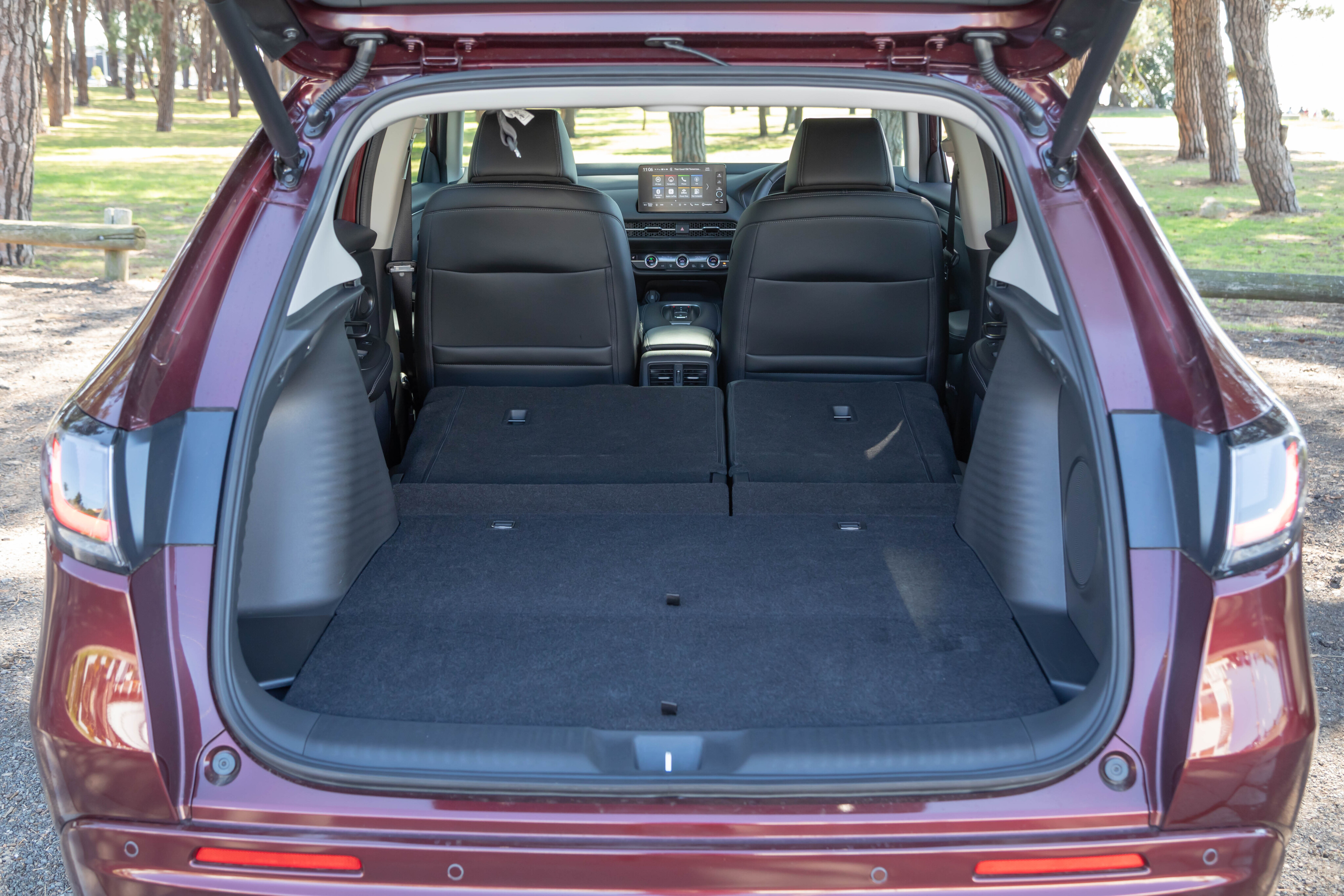
Honda took a more minimalist approach and it’s quite nice, especially the strip of hexagonal-shaped perforated plastic that breaks up the dash. It’s got a bit of a Mazda button-lite vibe to it, which makes it a very calm place to be. That doesn’t mean the Nissan isn’t calm, but the Honda feels very sleek and elegant inside while the X-Trail is more functional.
Traditionally Honda-firm seating is present and correct in the ZE-V and the Nissan’s plusher, more comfortable chairs are my pick for a long journey.

What are they like to drive?
The likely reason you’re looking at these cars is their electrified drivetrains.
Both Nissan and Honda sell identically specified petrol-only models; the X-Trail just comes in many more guises.
The two drivetrains are quite different from what most of us know of hybrids.
| Honda ZR-V e:HEV LX | Nissan X-Trail E-Power Ti-L | |
|---|---|---|
| Power | 104kW | 106kW |
| Torque | 182Nm | 250Nm |
| Electric motor | front | front and rear |
| Electric power and torque | 135kW/315Nm | 150kW/330Nm front, 100kW/195Nm rear |
| Combined power | 135kW | 157kW |
| Combined torque | 320Nm | NA |
| Battery | 1.05kWh lithium ion | 2.1kWh lithium ion |
| Transmission | continuously variable | single-speed reduction gear |
Let’s take on the Honda first – it appears to be a fairly straightforward series hybrid and feels a lot like the one in the HR-V.
That’s both good and bad as the HR-V felt underpowered in our small SUV test but it’s also very smooth and gives you a nice kick off the line before the engine roars into life. The 135kW/320Nm outputs aren’t exactly stratospheric but the ZR-V gets along pretty well.
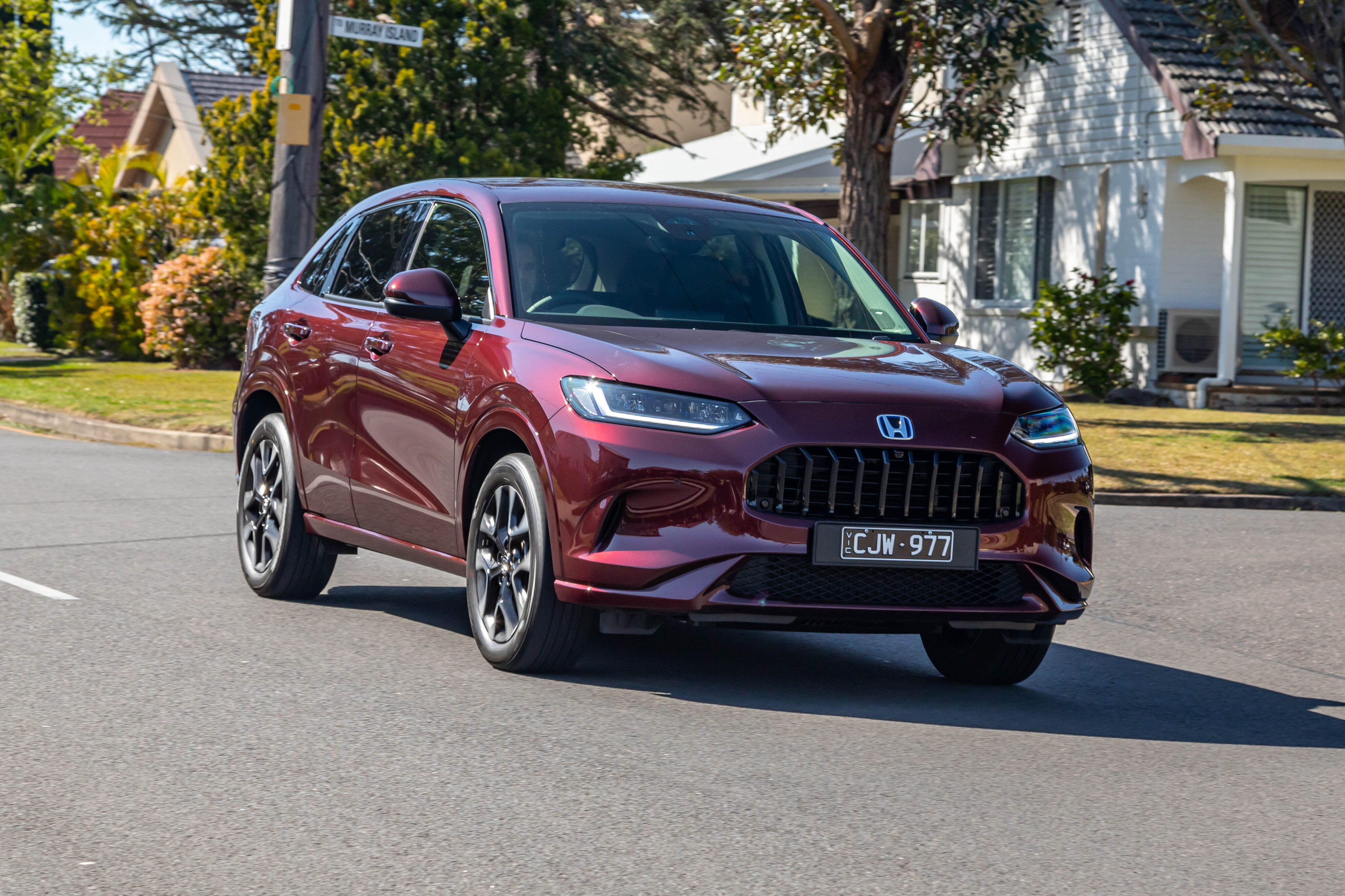
The Honda features two electric motors, one which acts as a generator to recover kinetic energy via regenerative braking which it then feeds to a small battery or the electric motor that drives the wheels on its own.
It’s quite clever and you can even choose how much regen you get by pulling the steering wheel paddles but it keeps resetting itself. It’s energetic enough around town but as soon as you’re on the freeway, the 1.5-litre turbo is pretty much on its own, generating power fed to the electric motor as well as driving the wheels directly.
And the thing is, in company with the Nissan, it’s a little uncouth. Road and engine noise made front-to-rear seat discussion difficult compared to the X-Trail, the latter when pressing on. The rear seat ride was also less settled.
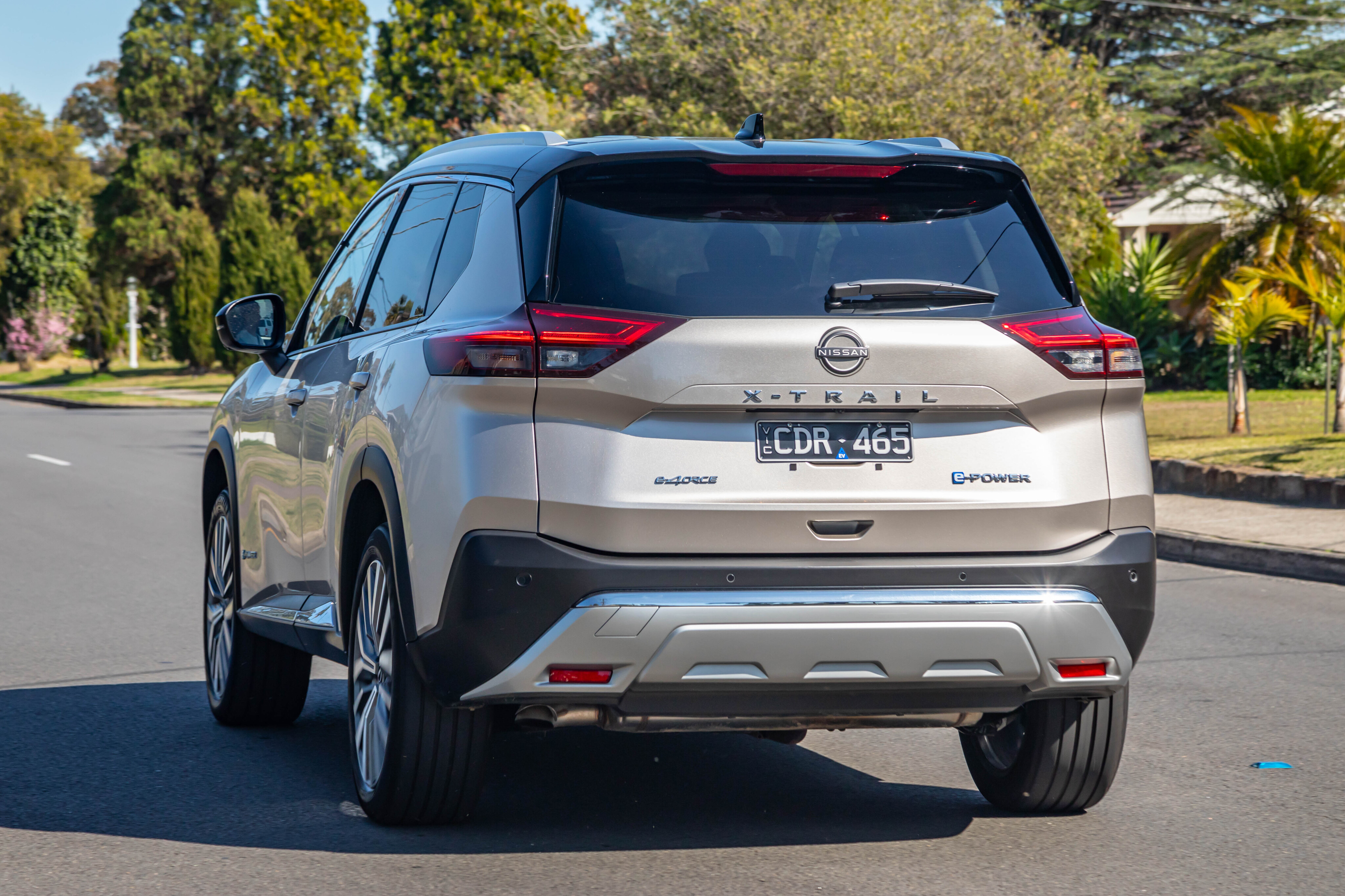
From the driver’s seat, it is obvious that this is a heavier car than its petrol siblings, two of which I’ve driven extensively. The extra weight of the battery and electric motor dulls the turn-in and the ride isn’t as well resolved. While the petrol car’s steering is relatively sharp, the hybrid’s is less accurate and requires a fair bit of correction when cornering hard.
Flat-to-the-floor acceleration starts well but the electric motor runs out of battery and puff remarkably quickly – as in quickly enough for me to remark upon it – and reminds me of F1 drivers’ complaints of clipping as the battery assistance falls away. That’s why the ZR-V feels similarly underpowered to the HR-V – the same thing happens in that car.
Lighter acceleration delivered a Toyota-like electric-only experience up to 40 or 50km/h which is especially useful in heavy traffic and suburban bombing about.

Despite all that, the front-wheel-drive Honda is more of a dynamic affair than the all-wheel-drive Nissan.
The X-Trail doesn’t bother too much with treading the line, it’s very much on the comfort side of the ledger. Gentle, safe understeer is the order of the day and it’s clear the front end has more power and torque than the rear.
Acceleration is fairly linear to about 70km/h when the oomph starts to fall slowly away. It’s nowhere near as noticeable as the Honda, though. Also less noticeable is the intervention of the petrol engine which acts solely as a generator in the X-Trail to supply electrons to the motors via an inverter.
It’s an interesting way to do it and it makes the Nissan feel like an EV, just with noise coming out from under the bonnet. Whether you think that’s a worthwhile thing is entirely up to you.
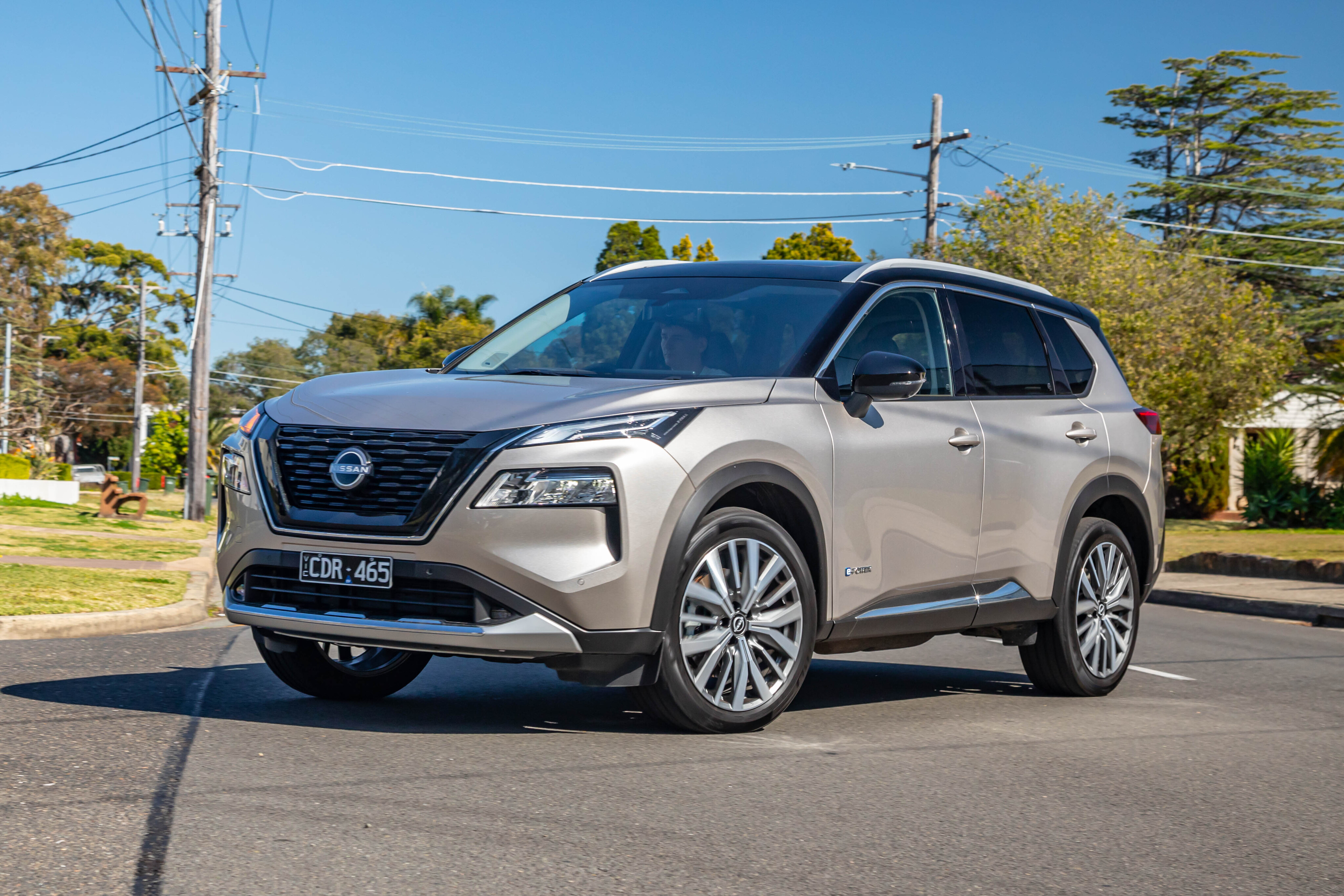
As is whether you think the fuel savings are worth the cost compared to the petrol-only X-Trail.
It’s a particularly interesting drivetrain as the three-cylinder turbo three-cylinder has a variable compression ratio that emits an amusing farting sound when the car is cold. Nothing to worry about and it soon fades away.
No physical connection exists between the petrol engine and transmission, just electricity finding its way to the 2.1kWh battery and the two motors via an inverter to deliver a combined 157kW (no total torque figure is quoted, although the front motor alone is 10Nm gruntier than the Honda's combined outputs).
The X-Trail also features an E-Pedal mode, which is helped by the two hefty electric motors. E-pedal means almost one-pedal driving so you rarely resort to the brake pedal in traffic except to pull you to a stop. Nissan reckons that’s what people want but I would like it to bring you all the way to zero. It’s a bit strong when you’re on the freeway – and cruise control disables it – but it’s an all-or-nothing option.
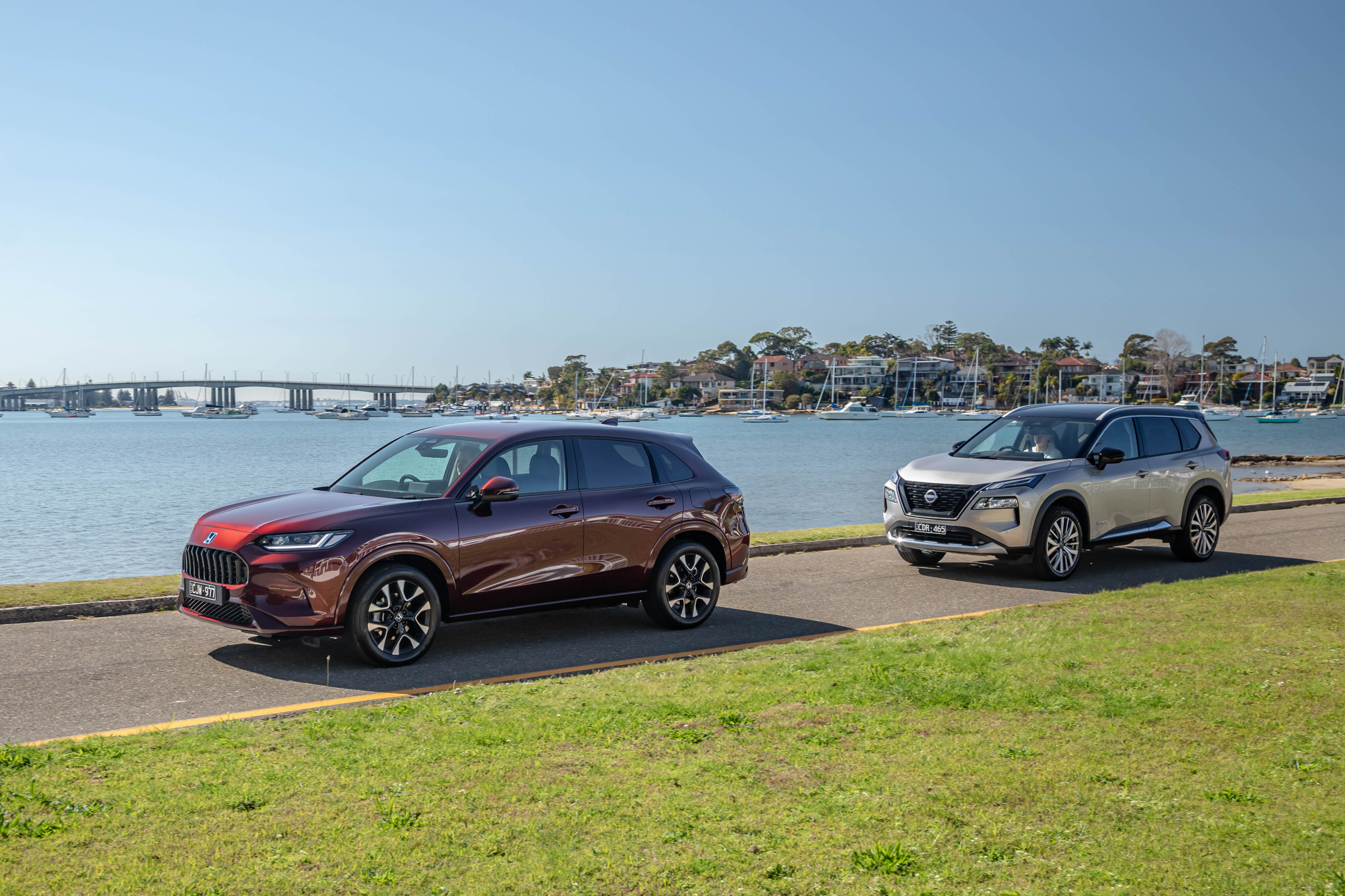
One slightly annoying thing about E-Pedal mode is that if you’re not paying attention and go for the brake as you’re rolling towards a stop, the pedal won’t necessarily be where you think it should be. As the E-Pedal system takes over some of the braking, it moves the pedal.
When you do find it, it feels a bit wooden. It’s something you’ll get used to but as this function isn’t the default, it might surprise you on occasion.
The X-Trail is quieter in pretty much all situations, with better insulation from road noise and just a rustling around the A-pillars. Neither of these cars is an exemplar, but front-to-rear seat chatter was much less strained in the Nissan.
It’s always fascinating putting two cars together like this because, on its own, the Honda doesn’t seem that noisy.
If any of the terms in this section have left you scratching your head, these articles will help bring you up to speed!

How are they on fuel?
Both cars are impressively restrained drinkers.
We took the two cars across the same drive loop, swapping drivers to ensure both cars got the same treatment across the same roads.
The ZR-V excelled with a 5.9L/100km result, just 20 per cent off the official number while the X-Trail knocked out 6.9L/100km. The only problem is that it’s not a remarkably better result than the 2.5-litre petrol (when driven gently, anyway).
| Honda ZR-V e:HEV LX | Nissan X-Trail E-Power Ti-L | |
|---|---|---|
| Fuel consumption (claimed) | 5.0L/100km | 6.1L/100km |
| Fuel consumption (on test, indicated) | 5.9L/100km | 6.9L/100km |
| Fuel tank capacity | 57 litres | 55 litres |
| Real-world range | 966km | 797km |
| Fuel type | 91 RON | 95 RON |
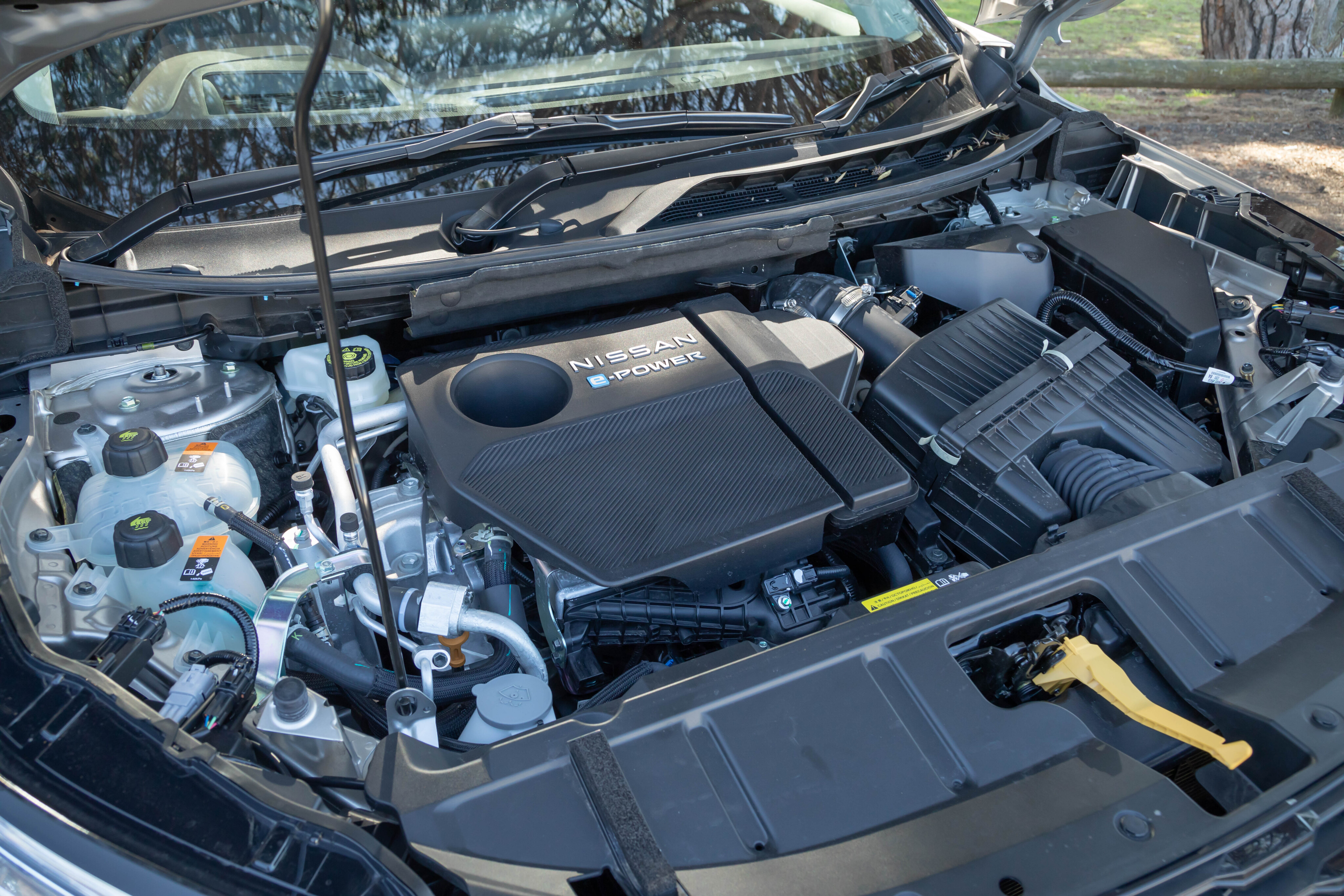
How safe are they?
Both have fresh five-star ANCAP safety ratings, the Honda’s just a couple of months old.
| Honda ZR-V e:HEV LX | Nissan X-Trail E-Power Ti-L | |
|---|---|---|
| Airbags | 11 | 7 |
| Traffic sign recognition | Y | N |
| Driver attention detection | Y | Y |
| Road departure mitigation | Y | Y |
| Lane-keep assist | Y | Y |
| Reverse cross-traffic alert. | Y | Y |
| Traction and stability controls | Y | Y |
| Lane departure warning | Y | Y |
| Rear seat reminder | Y | Y |
| Forward AEB | pedestrian/cyclist detection | pedestrian/cyclist/junction detection |
| Blind-spot monitoring | Y | Y |
Both have impressive safety equipment lists, the Nissan adding junction detection on top of pedestrian and cyclist detection.
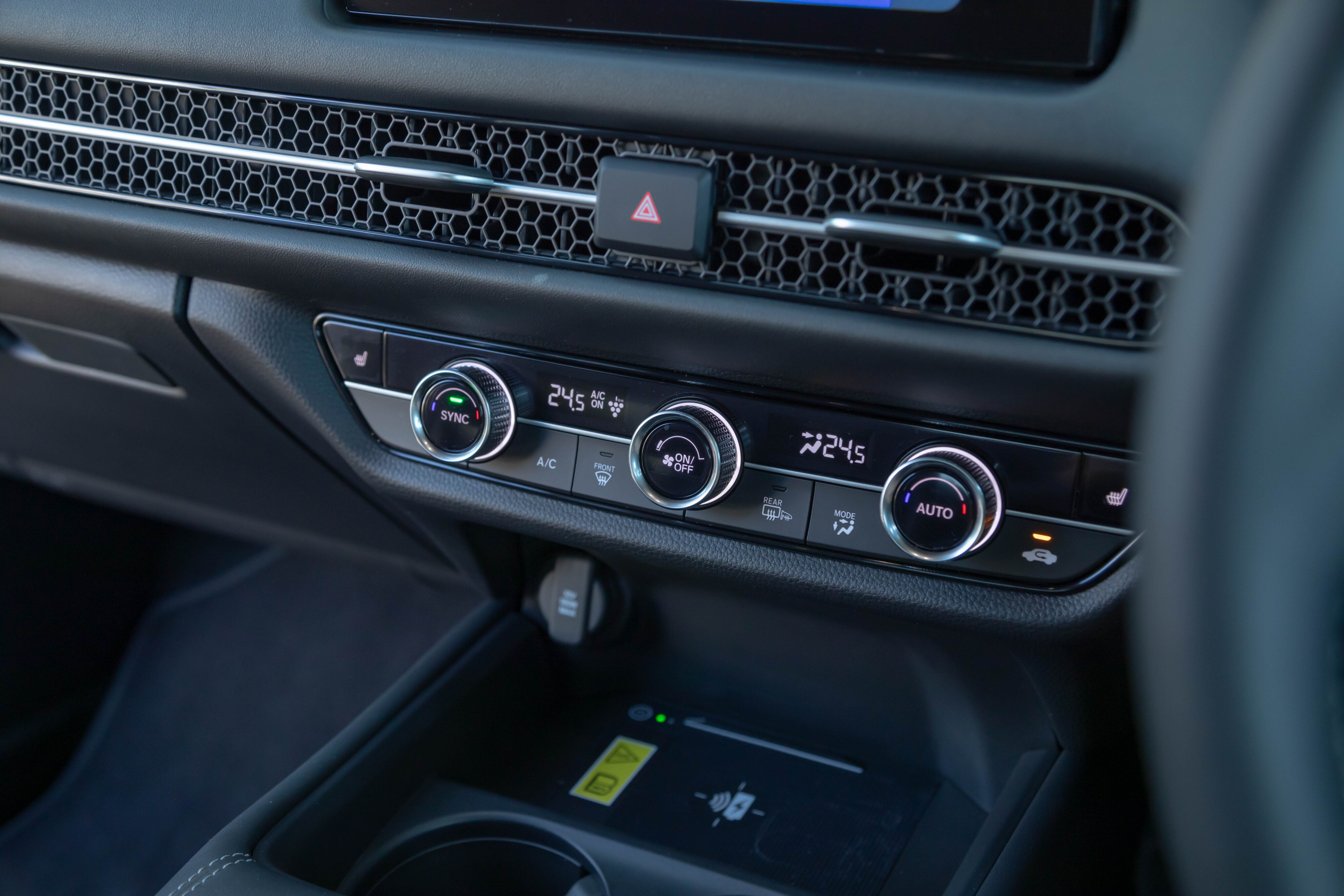
Warranty and running costs
The clear winner here is the Honda.
Both offer a five-year/unlimited-kilometre warranty and capped-price servicing. Honda out-prices even Toyota here, with $199 per service. In light of that, it probably wouldn’t matter what the Nissan costs, but it’s a lot.
I mean, a real lot. Over five years you’ll shell out a whopping $3056 compared to the Honda’s $995. That’s more expensive than even the VW Tiguan, Subaru Forester and Kia Sportage, none of which are shrinking violets on service pricing.
Both share annoyingly short 12-month/10,000km service intervals too. At least the Honda is cheap. Not just cheaper, actually cheap.
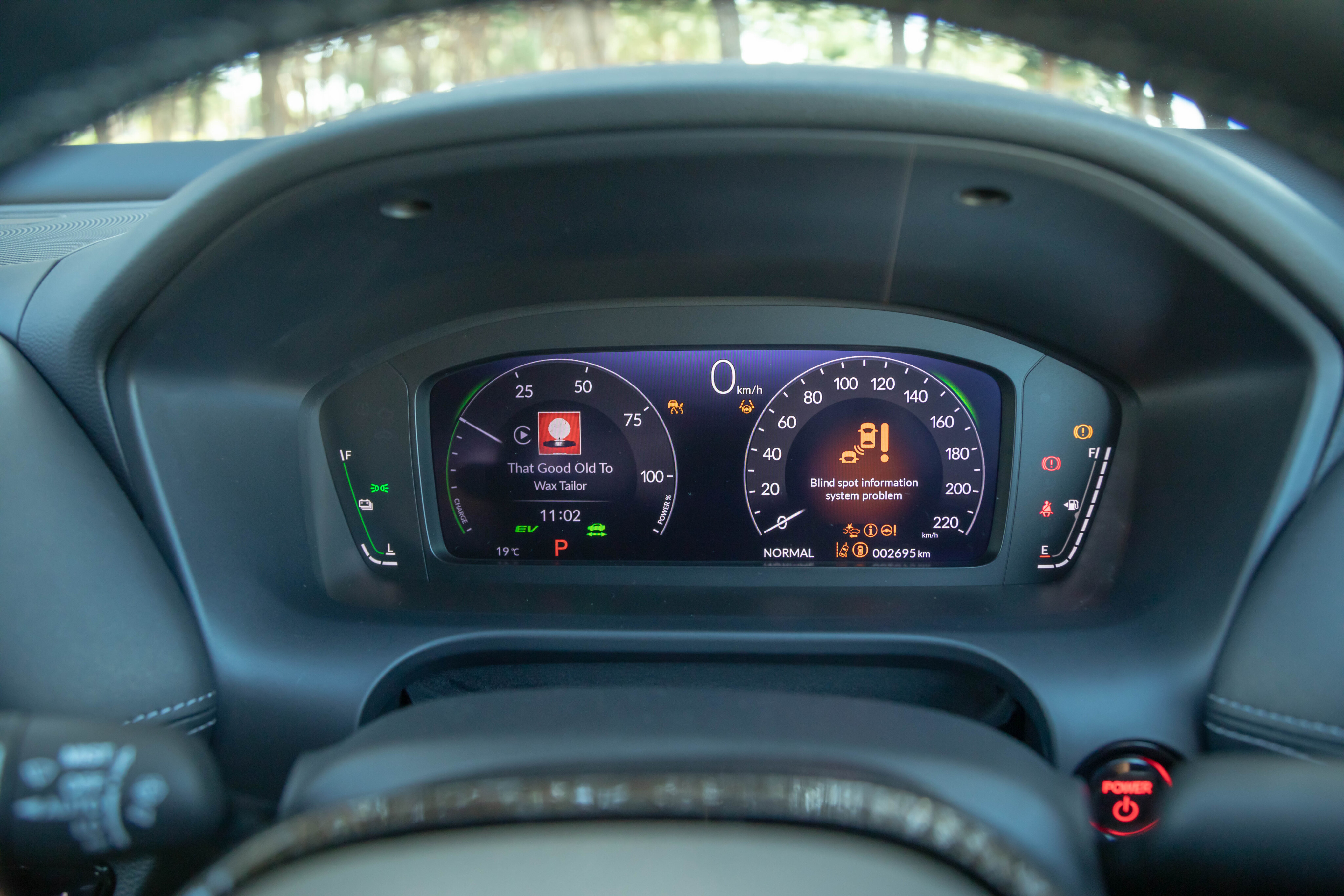
VERDICT
Overall, the Nissan comes out a long way ahead – which is saying something, because the ZR-V is a very good car.
The Honda is athletic, looks great and for a lot of people is the right size because the X-Trail is a monster in the mid-size segment. The smaller car’s interior is also calm, cool and collected and there are many good things to say about it. It’s a great car.
Next to the ZR-V, the Nissan is better at just about everything, is better value for money and really only loses on service costs and dynamic abilities. The Nissan is comfortable, roomier, more refined and nails down a lot of what people want in this segment.

| Honda ZR-V e:HEV LX | Nissan X-Trail E-Power Ti-L | |
|---|---|---|
| Safety, value and features | 8 | 8 |
| Comfort and space | 7 | 8 |
| Engine and gearbox | 7.5 | 8 |
| Ride and handling | 7 | 8 |
| Technology | 7.5 | 8.5 |
| OVERALL (average of above) | 7.4 | 8.1 |
| Honda ZR-V e:HEV LX | Nissan X-Trail E-Power Ti-L | |
|---|---|---|
| Price | $54,900 drive-away | $57,190 + on-road costs |
| Drivetrain | ||
| Engine | 1.5L 4-cyl turbo-petrol | 1.5L 3-cyl variable compression turbo-petrol |
| Drive | front-wheel | all-wheel |
| Combined power | 135kW | 157kW |
| Combined torque | 320Nm | not quoted |
| Transmission | continuously variable | single-speed reduction gear |
| Battery | 1.05kWh | 2.1kWh |
| Chassis | ||
| L/W/H/W–B | 4568/1840/1620/2655mm | 4680/2065/1725/2705mm |
| Track (F/R) | 1591/1605mm | 1575/1580mm |
| Weight (tare) | 1439kg | 1903kg |
| Boot | 370L | 575L |
| Fuel tank | 57L | 55L |
| Economy (combined ADR 81/02) | 5.0L/100km | 6.1L/100km |
| Suspension | Front: struts, coil springs, anti-roll bar. Rear: multi-link, coil springs, anti-roll bar | |
| Steering | electric rack-and-pinion | electric rack-and-pinion |
| Front brakes | Ventilated discs | Ventilated discs |
| Rear brakes | Solid discs | Solid discs |
| Tyres | Yokohama Advan dB V552 | Michelin Primacy 4 |
| Tyre size | 225/55R18 | 255/40 R20 |
| Safety | ||
| ANCAP rating | 5 Stars | 5 stars |
| 0-100km/h | 9.0 seconds (est) | 8.5 seconds (est) |
COMMENTS